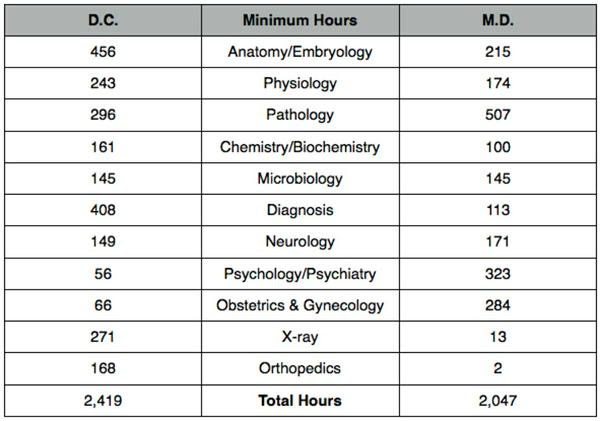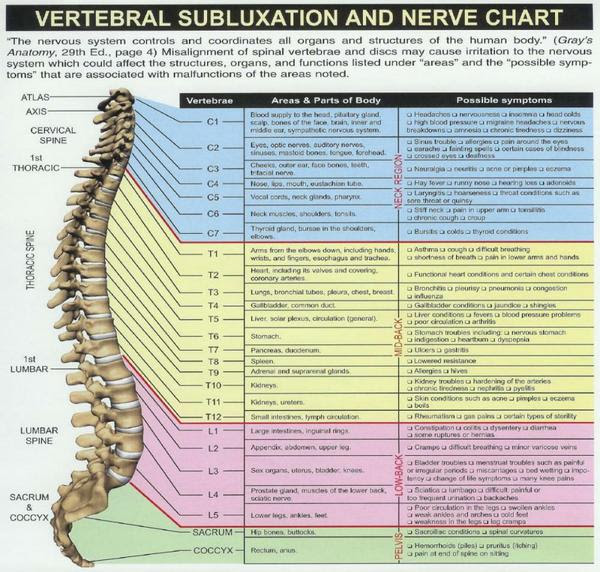1. Pain can show up last and is different from a Problem. People often have “problems” long before they experience “pain”. For instance, someone's back can be restricted or unstable for months or years before it presents with pain. Additionally, just because you don't have pain; doesn't mean you're healthy. Muscle, ligament and joint injuries often occur as a result of long-term biomechanical dysfunctions due to sitting, standing on hard floors and even old injuries. This is why it's a good idea to be proactive and get weekly chiropractic adjustments rather than being reactive!
2. Athletes use chiropractors to stay well and perform better, not just for the occasional injury. Athletes choose chiropractors because we are movement specialists. Chiropractors were spotted all over the Olympic coverage last year, and top athletes such as Michael Jordan, Tiger Woods, Michael Phelps, Tom Brady, Evander Holyfield, and Arnold Schwarzenegger have all been proud patients of chiropractors. These days it’s far more common than not for major athletes and sports teams to keep chiropractors nearby to help prevent injuries, speed injury recovery, improve posture & balance and coordination, and give them a greater competitive edge.
3. The body does not perform as a cluster of separate mechanisms, but rather a cascade of events that all starts with proper control by the nervous system. The nerves that travel through and control every function of your body originate at the spinal cord and their transmission may be disrupted if the joints of the surrounding spinal column are not moving properly. The disruption in biomechanical integrity combined with altered physiological function is what chiropractors call a subluxation. Below is a chart that illustrates the relationship of the spinal nerves exiting the vertebra branching off to the various organ systems. You can see why it is not uncommon for a chiropractor to treat a patient with mid-back pain who also suffers from irritable bowel system, a patient with a subluxated sacrum who has been unsuccessfully trying to become pregnant, or a patient with an upper back fixation and acid reflux.
4. Doctors don’t do the healing. Sorry to disappoint you, but a chiropractor will never fix your back. What we are able to do is restore proper motion in the joints, which relieves tension on the nerves and muscles and allows your body to do the healing (which is what its designed to do in the first place). Joints that do not move correctly create interference between communication of the nervous system and your body. As chiropractors, we believe that the body is a perfect organism in its natural state, and all disease comes from a disruption in the body’s proper transmission of signals by the nerves which affects its ability to heal and to defend against disease-causing agents. We never treat disease. We assess to find which spinal levels are causing the dysfunction, and we adjust it to restore proper nerve flow so the nervous system may work as efficiently and effectively as possible.
5. Chiropractic is for all ages. Many seniors aren’t aware of the benefits of chiropractic care which can help them not only with pain relief, but also increase range of motion, balance and coordination, and decrease joint degeneration. There’s also no patient too young for chiropractic either! We have become one of Austin's best Pediatric Chiropractors and I have personally checked dozens of babies after birth for misalignments of the upper vertebrae that may occur as a result of the birth process. In addition to supporting overall health and well-being, we care for children to promote the development of a healthy brain and nervous system, to assist with colic, asthma, allergies, bed-wetting and sleeping problems, and to assist with behavioral disorders.
6. We know about more about the body than your backbone! This surprises many people who had no idea that chiropractors give advice on nutrition, fitness, ergonomics and lifestyle, screen for conditions unrelated to the musculoskeletal system and refer out to other practitioners when necessary. Chiropractors are also able to complete specialties in other areas such as pediatrics, sports rehabilitation, neurology, clinical nutrition, and addictions and compulsive disorders.
Other than particular specialties and the differences in learning to adjust and learning to prescribe medication, our training hours are not dissimilar from that of medical doctor. The following are the classroom hours for basic science requirements compiled and averaged following a review of curricula of 18 chiropractic schools and 22 medical schools.

7. Successful chiropractic patients accept responsibility. When somebody says that they tried chiropractic and it didn’t help, I cringe and get the feeling that they really missed the boat. Of course, there are cases with complicating factors, but I have heard this from people with straightforward chiropractic problems when it is very clear what has happened. In most cases, one doesn’t acquire back pain over night, and it’s not going to go away over night either. If a weak core from years of sitting at your desk is to blame for the additional stress on your joints, I would expect an adjustment to provide relief, but once the condition is no longer exacerbated, I would most definitely expect for my patient to follow through with the necessary exercises to prevent future problems. I might also suggest we evaluate your nutrition if I suspect an inflammatory diet may be wiring you for pain. Sure, I’m always happy to adjust someone, but if you’ve been given homework and you don’t do it, remember that this has to be a team effort!
8. Chiropractic may help you get sick less. Studies have indicated that adjustments consistently reduce the production of pro-inflammatory mediators associated with tissue damage and pain, and may also enhance the production of immunoregulatory complexes important for healthy immune system defense. As far back as the deadly flu pandemic of 1917-1918, chiropractors noticed that their patients seemed to have fewer fatalities than among the general population and were able to publish their work in an osteopathic journal since no scholarly journals were accepting chiropractic data. The estimated death rate among patients of conventional medical care in the U.S. was estimated at 5 to 6 percent while the fatality rate among influenza cases receiving spinal adjustments was estimated at 0.25%.
9. “I heard I’ll have to go forever” is a myth. You may want to go to your chiropractor forever once you’ve started because you didn’t realize how great getting adjusted is, but it's all a choice.
The truth is, as long as you are getting adjusted, you will get the benefits of chiropractic care. The same is true with any other form of health building activities including: regular exercise, brushing your teeth, taking a shower, eating healthy, etc. As long as you do these activities, you get the benefit. This is why many people choose to see their chiropractor weekly or monthly for wellness or maintenance care.
10. Adjustments don’t hurt. There is no bone snapping or warrior-style pulling heads off spinal columns! The neck adjustment some chiropractors use causes anticipation for many new patients, but is actually much more gentle than they imagined, and involves a quick, direct thrust to a specific spinal bone. The sound an adjustment makes is called a cavitation and is only space being created within the joint causing gasses to be released from the joint capsule, which creates the popping or cracking noise.
Also, chiropractic adjustments will not wear out your joints, as some imagine because they have been warned not to “crack their knuckles” for this reason in the past. Adjustments, unlike “knuckle cracking” or having your friend stomp on you while you lay on the carpet, are applied specifically to improve the motion of your joints and limit the small dysfunctions that over time can lead to arthritis. Most people after an adjustment describe the feeling as being “lighter”, having greater ease in moving the body, and being able to stand up taller.



